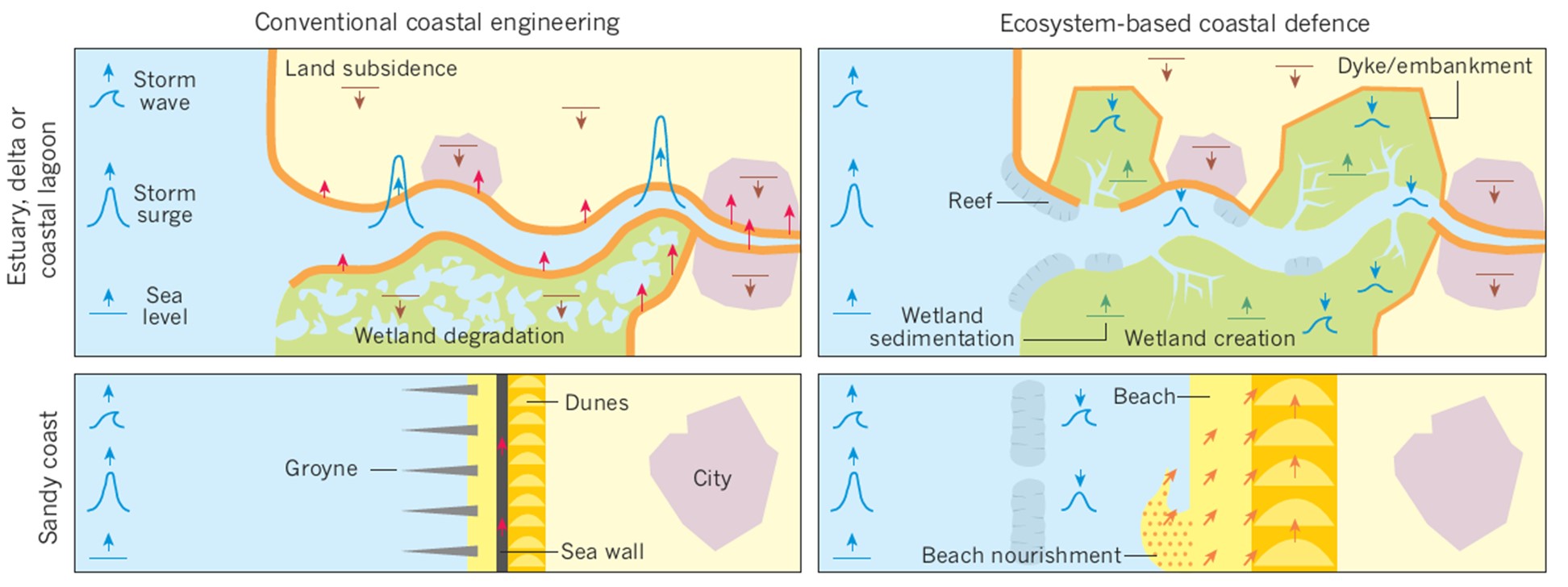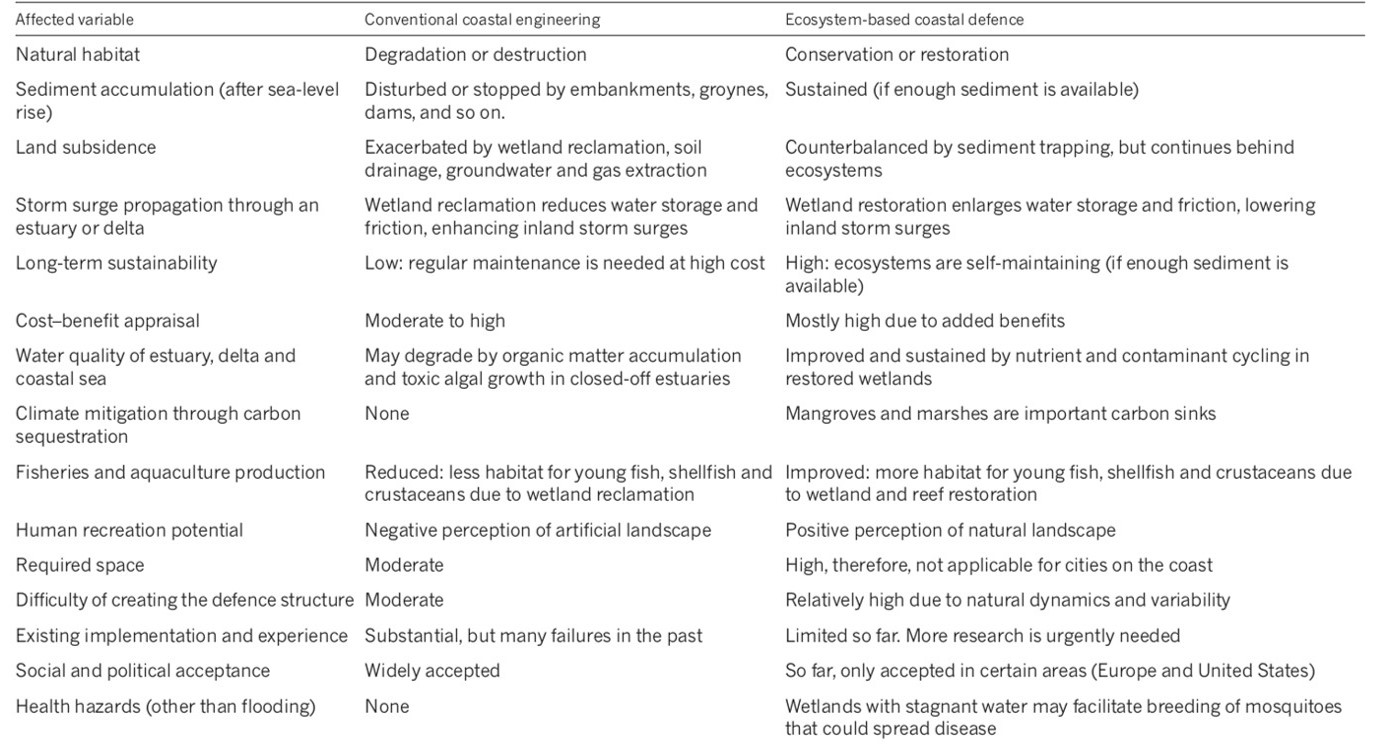Eco-Friendly Approaches and Nature-Based Solutions in Coastal Protection
- Green infrastructure refers to trees, lawns, hedgerows, parks, fields, forests, etc. Blue infrastructure refers to water elements, like rivers, canals, ponds, wetlands, floodplains, water treatment facilities, etc. These terms come from urban planning and land-use planning. Grey infrastructure refers to built or engineered infrastructure.
- Hybrid infrastructure encompasses both green and grey approaches, as well as “blue” infrastructure, which mimics natural systems using artificial materials or through combining natural and non-natural structures.
- Ecological restoration is the process of assisting the recovery of an ecosystem that has been degraded, damaged, or destroyed.

The schematic maps in the figure above illustrate global and regional changes that increase the risk of coastal flood disasters (blue arrows indicate an increase or decrease in intensity of storm waves, storm surge and sea level), and the basic principles of flood protection by conventional coastal engineering (left) and new ecosystem-based defences (right) for an estuary, delta or coastal lagoon (top) and a sandy coast (bottom). In an engineered estuary, delta or coastal lagoon (top left), embankment of wetlands stimulates the landward heightening of storm surges and exacerbates land subsidence (brown arrows) due to inhibited sediment supply and soil drainage. In the case of ecosystem based defence in an estuary, delta or coastal lagoon (top right), wetland and reef creation attenuate landward storm surge propagation and storm waves, and stimulate wetland sedimentation (green arrows) with sea-level rise.For an engineered sandy coast (bottom left), groynes and sea walls may provoke dune degradation due to hindered sand supply, whereas for ecosystem-based defence along a sandycoast (bottom right), reefs help to attenuate storm waves and surge, and off shore sand nourishment stimulates beach and dune sedimentation with sea-level rise (orange arrows).


There are two main considerations, that determine the applicability of nature-based solutions in coastal engineering.
References
- Schoones, T.; Gijon Mancheno, A.; Scheres, B.; Bouma, T.J.; Silva, R.; Schlurmann, T.; Schüttrumpf, H. (2019): Hard Structures for Coastal Protection, towards greener designs, Estuaries and Coasts, 42(7), 1709-1729, DOI 10.1007/s12237-019-00551-z
- Temmermann, St.; Meire, P.; Bouma, T.J.; Herman, P.M.J.; Ysebaert, T.; De Vriend, H. J. (2013): Eco-system Based Coastal Defence in the Face of Global Change, In: Nature, Vol 504, Issue 5, DOI 10.1038/nature12859